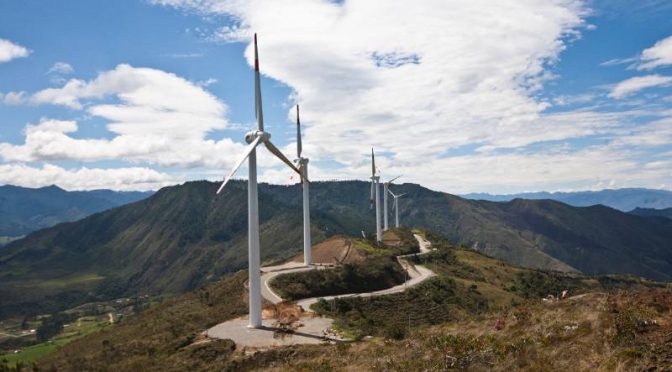The fourteen wind turbines arrived in the country on January 24 at Puerto Bolívar (El Oro), through the port operator Yilport Holding. The Huascachaca wind farm is located in the north of Loja, in San Sebastián de Yuluc, a rural parish in the Saraguro canton.
From China came the fourteen wind turbines that will produce 50 megawatts of electricity. The teams will go to the Huascachaca wind farm, located in the north of Loja, in San Sebastián de Yuluc, a rural parish in the Saraguro canton.
An autogenerator is a device that converts the kinetic energy of the wind into electrical energy. They have blades that rotate between 13 and 20 revolutions per minute. They can have a constant or variable speed.
The fourteen wind turbines arrived in the country on January 24 at Puerto Bolívar (El Oro), through the port operator Yilport Holding.
The works are located on the relatively flat plateaus oriented from south to north, called Uchucay and Yuluc, where the fourteen wind turbines will be located.
The project includes the construction of two electrical substations, the first located in the Uchucay sector on the same property as the wind farm and the second in La Paz, Nabón canton.
The results of the studies carried out by Elecaustro defined that the wind farm will have an installed capacity of 50 MW, with wind turbines with a unit power of around 3.3 MW and an expected average annual gross production of 132.9 GWh.
To achieve the conclusion of the project, two phases have been considered: the first includes the improvement, expansion and rectification of the access roads, from the intersection of the Girón-Pasaje road to the Uchucay community of 6.16 km in length, divided into two sections: section via Girón, Pasaje-Puente over the Jubones river of 1.65 km; and a 4.5 km bridge section over the Jubones-Población de Uchucay river; and the bridge over the Jubones River, 50 m long.
The second phase is subdivided into A and considers the supply, construction and commissioning of the Uchucay substation and its access road; 138 kW transmission line, La Paz sectioning substation and road axis 2. This includes the provision and assembly of the fourteen wind turbines, construction of the remaining civil works for the wind farm; and, medium voltage collector system (34.5 kW).
It has been executed with an investment of $90 million, which have been financed with resources from the State Bank.
With the start-up of this wind project, it is expected to reduce 76,000 tons of CO2 into the environment annually, through the production of 130 GWh of clean and renewable energy and the contribution to the National Interconnected System with 50 megawatts (MW).
Government spokespersons point out that with the arrival of these wind turbines, progress is being made towards the completion of the work which, in its different stages, has generated 425 direct and indirect jobs.
Each wind turbine has a power of 3,571 megawatts and a weight of 600 tons and will convert the force of the wind into electrical energy, through the rotation of its blades at different speeds.
The undersecretary of Generation, José Medina, highlighted that the country has an Electricity Master Plan updated until 2031, which encourages the construction of renewable energy generation projects, such as the Huascachaca wind project, which will be exploited at the largest wind generation in Ecuador.
The manager of Elecaustro, Antonio Borrero, commented on the extensive management carried out to achieve the Huascachaca Wind Project, which represents winds of change for the country, since, in addition to providing renewable energy, it allows generating development in the area of influence.


